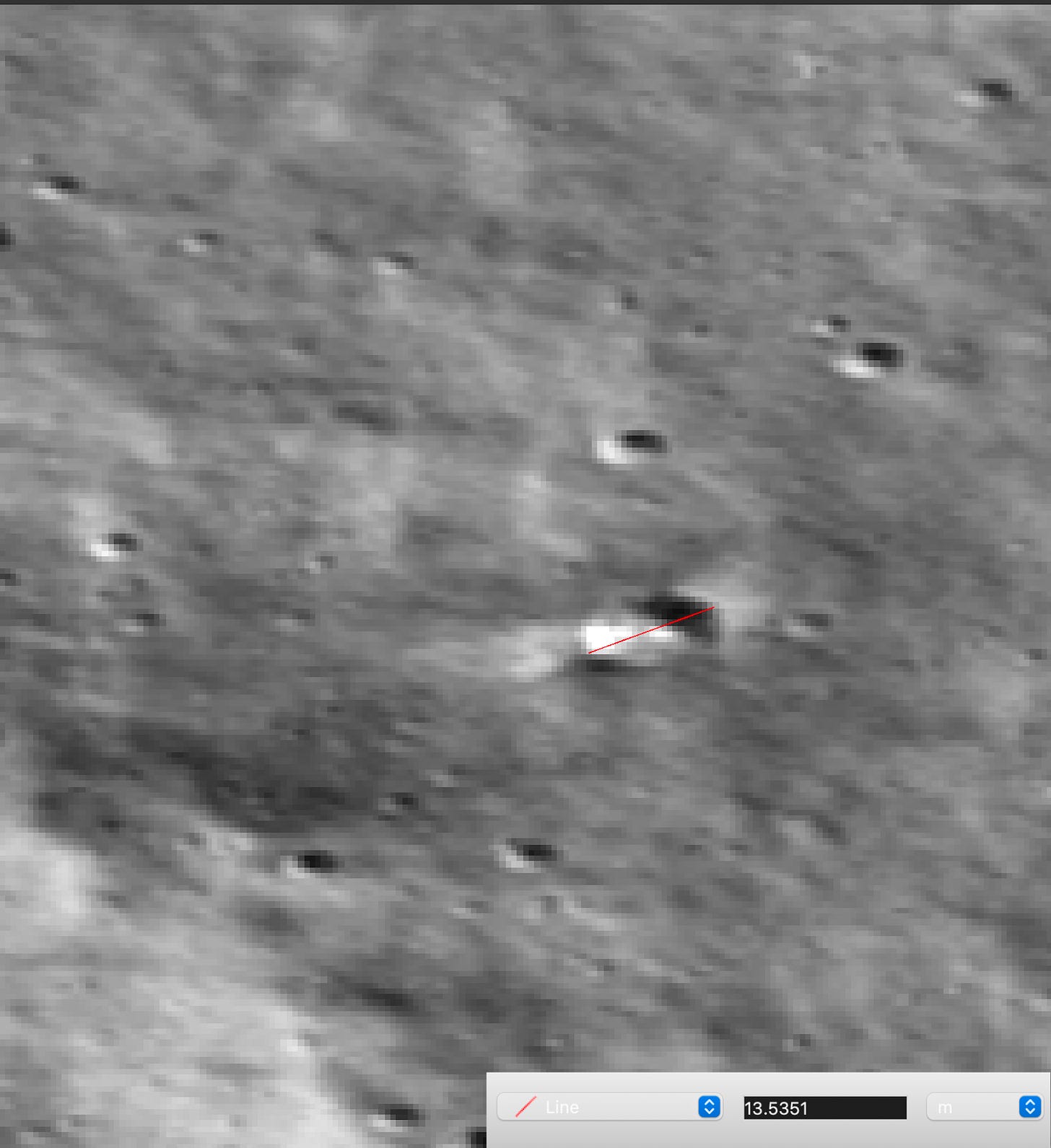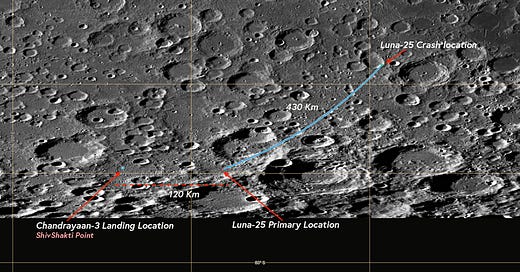Revisiting the Luna 25 Impact site
The latest PDS data from LROC offers a clearer view of the Luna-25 impact site.

A few days back, the LROC team finally released the 57C PDS Dataset and with it, we get a fresh perspective of the Luna 25 impact site, offering new insights into the mission's final moments. I will not go into the causative factors of the mishap, the official reason for Roscosmos is due to a faulty component in the onboard computer.
Here's the official statement for those interested:
Official Statement from Roscosmos (Translated to English)
"Luna-25": preliminary results of the work to determine the causes of abnormal station operation
On August 19, when issuing a corrective impulse to transfer the spacecraft from a circular circumlunar orbit to an elliptical pre-lunar orbit, the Luna-25 propulsion system operated for 127 seconds instead of the planned 84 seconds. As a result, the station entered an uncalculated unclosed orbit and collided with the lunar surface.
It was determined that the most probable cause of the accident was the abnormal functioning of the onboard control complex associated with the failure to turn on the accelerometer unit in the BIUS-L instrument (angular velocity measurement unit) due to the possible arrival in one data array of commands with different priorities of their execution by the instrument. In this case, the distribution of commands in data arrays has a random (probabilistic) character.
In this regard, the onboard control system received zero signals from the accelerometers of the BIUS-L device. This did not allow the corrective impulse to fix the moment of the required velocity and timely shutdown of the spacecraft propulsion system, as a result of which its shutdown occurred according to the time setpoint.
Recommendations on additional activities for subsequent lunar missions were formed.
Luna25 #MissionLuna25
Scott explained in detail about this and dissected the statment. There's also been plenty of explanations of it elsewhere, Anatoly Zak offers more insights leading upto the crash. He also gives an excellent history on its development
Immediately following the crash, the LROC Operations Team swiftly implemented a series of 4-hour sequence adjustments for the Lunar Reconnaissance Orbiter (LRO) to prioritize capturing the impact site on August 24, 2023. These efforts revealed that Luna-25 had impacted approximately 430 km away from its intended destination, conclusively ending the mission. Notably, this event occurred after the launch of Chandrayaan-3 but before its successful landing.
This image provides a detailed view of the crater resulting from the Luna 25 crash. Captured on September 21, 2023, this image comes a month after the Lunar Reconnaissance Orbiter (LRO) shared its initial images of the site. A closer examination highlights notable changes in albedo and the presence of crash ejecta, which are delineated in orange.


Further examination of the crater reveals that it spans approximately 13.5 meters in diameter, revealing a stark testament to the immense force of the impact.

Update 18.03:
Further processing of the dataset in Polar stereographic projection reduced the stretching issue - I've updated the images accordingly.
~FIN





